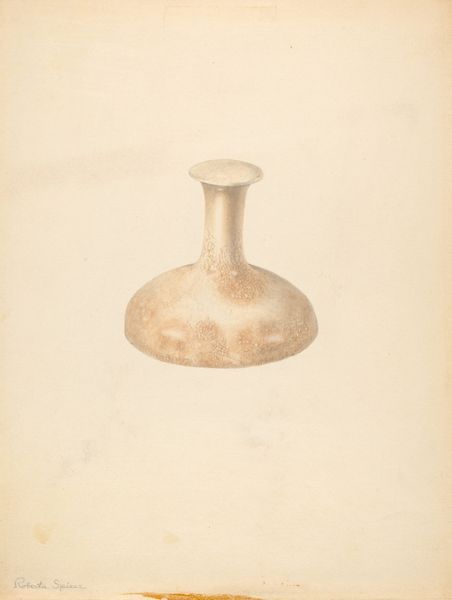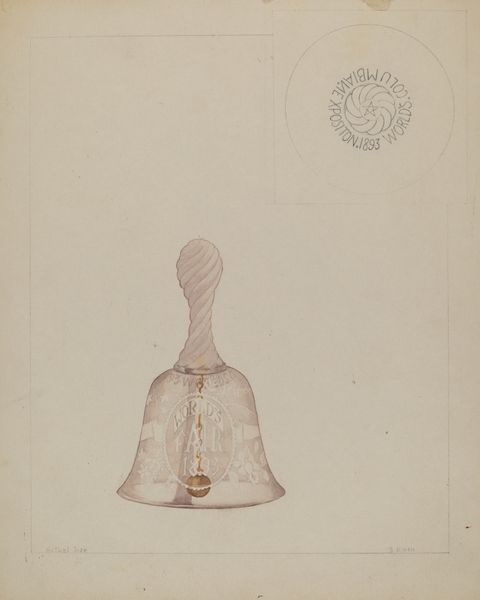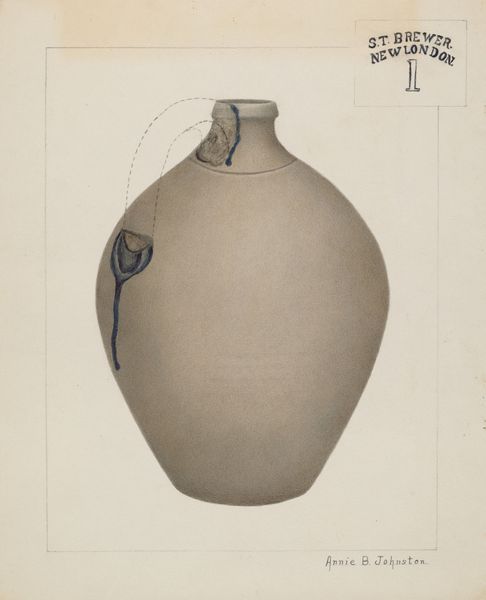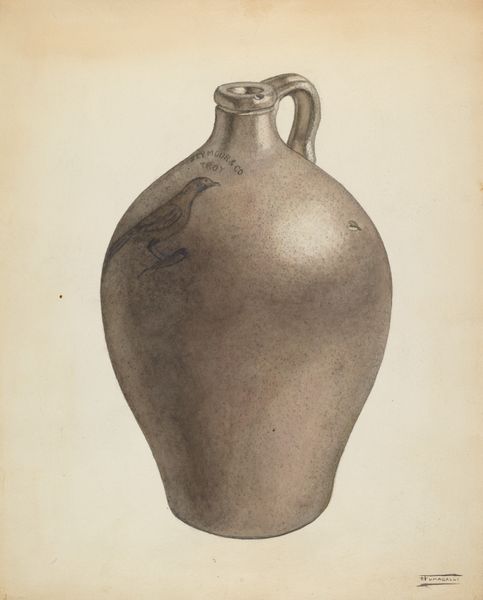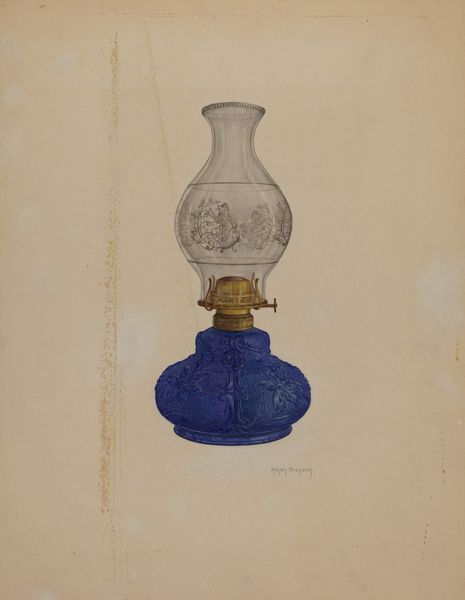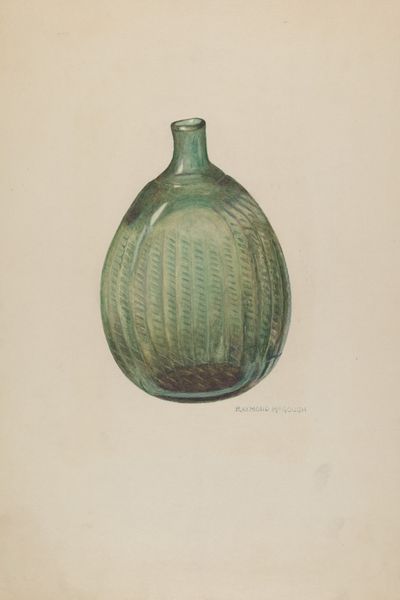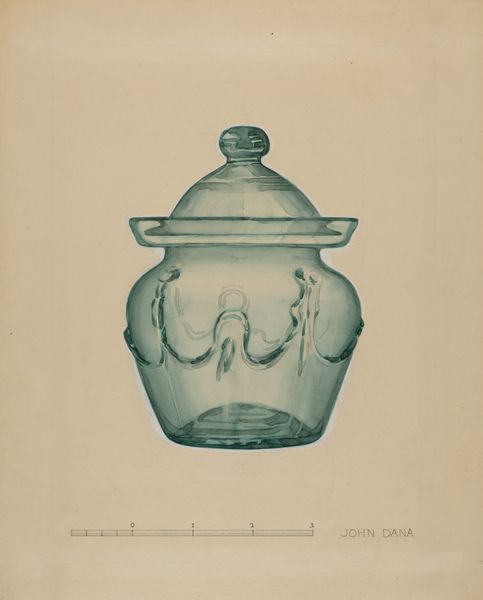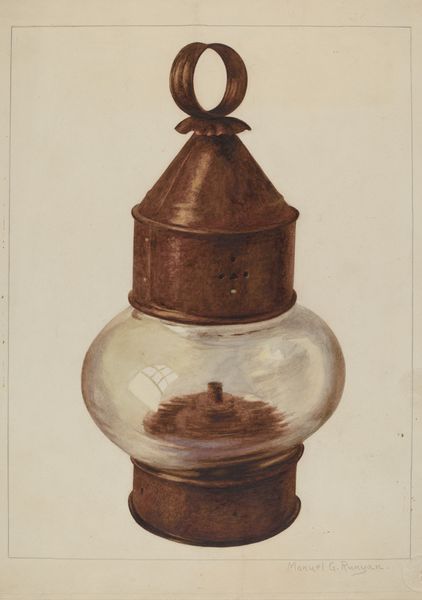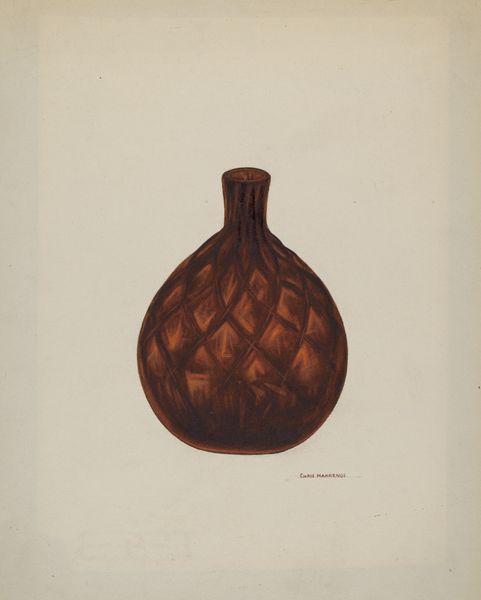
drawing, pencil
#
pencil drawn
#
drawing
#
pencil drawing
#
pencil
#
academic-art
#
modernism
#
realism
Dimensions: overall: 35.4 x 24.5 cm (13 15/16 x 9 5/8 in.)
Copyright: National Gallery of Art: CC0 1.0
Editor: This is Paul Poffinbarger's "String Bowl," created around 1941, a delicate pencil drawing. There's something both fragile and a little melancholy about it, a sense of quiet containment. What do you see in this piece? Curator: I'm immediately drawn to the bell jar itself, a potent symbol of preservation and often, the opposite: decay. What is being protected here? Is it the simple ball of yarn, representing domesticity, comfort, the act of creation itself? Or is the jar isolating it, making it a specimen, a relic? Editor: I hadn't thought of it that way, more like keeping something safe. Is it the single strand leading up and out through the top relevant? Curator: Precisely! That escaping strand breaks the containment, suggesting the yarn’s potential, its lifeline. Consider, too, the period this was made – around 1941, the world at war. The simple act of knitting, represented by the yarn, could become a powerful symbol of home, of hope, amidst global upheaval. Do you think it may carry those hopes with it? Editor: I see what you mean. Knitting as hope— I really didn't connect those two before. Maybe that explains some of that quiet sadness that I picked up on too, since, like you pointed out, war times. Curator: And what about the roundness? Circles are ancient symbols of totality, wholeness, the eternal. Poffinbarger is not simply drawing a still life; he's evoking deeper layers of meaning. Editor: I hadn’t considered the symbolic implications of such everyday objects. I will certainly look at still lifes differently now! Curator: The mundane, elevated— that’s often where we find the most resonant symbols of all.
Comments
No comments
Be the first to comment and join the conversation on the ultimate creative platform.
